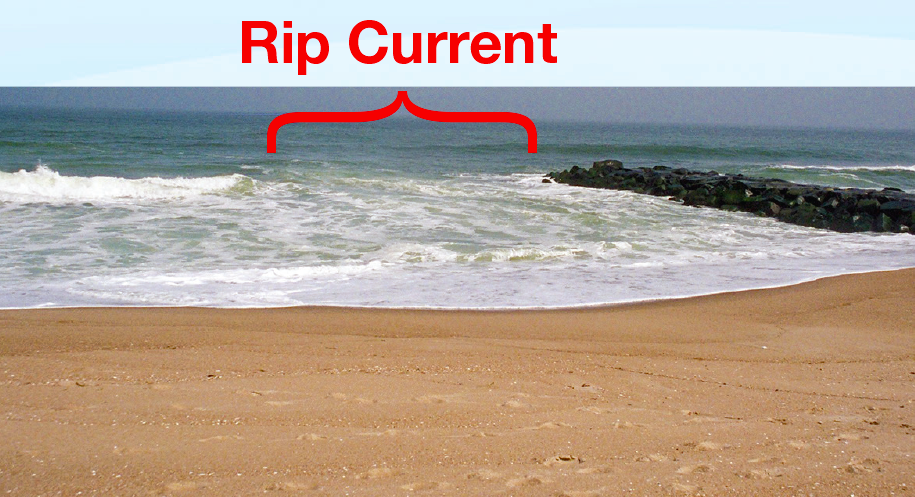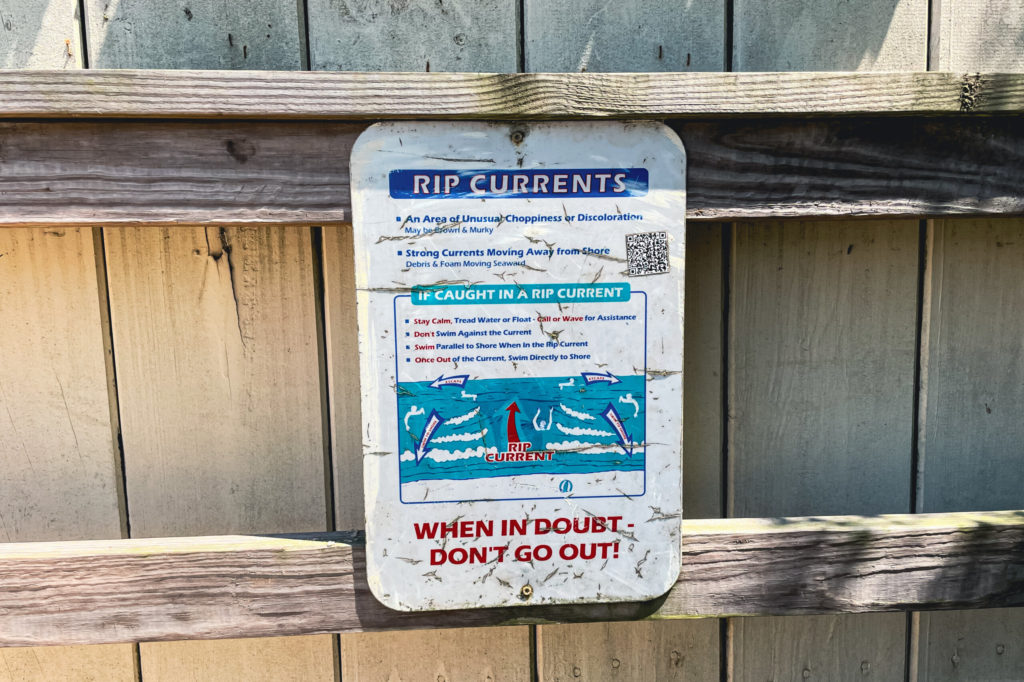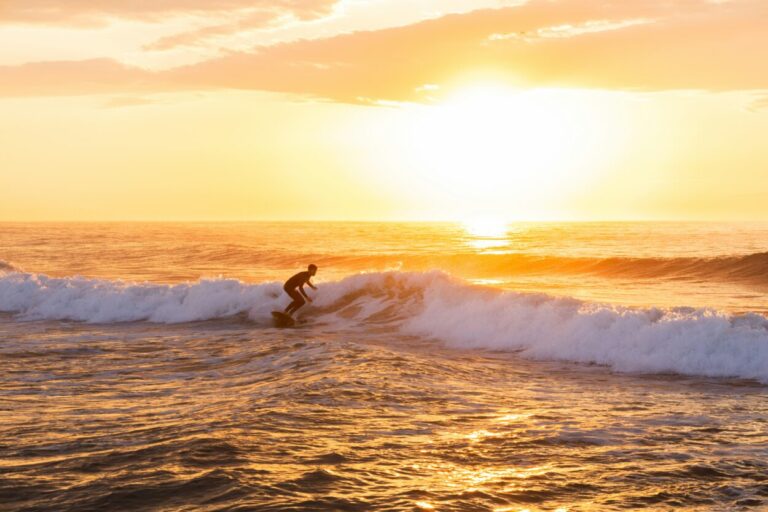What’s A Rip Current?
The National Oceanic and Atmospheric Administration describes rip currents as “powerful, narrow channels of fast-moving water.” Rip currents can be dangerous for all levels of swimmers – experienced or not. The NOAA also notes that “panicked swimmers often [incorrectly] try to counter a rip current by swimming straight back to shore;” this can put swimmers in a fatigued state, making it harder for them to keep swimming. Many experienced lifeguards, surfers, and swimmers can spot a rip current from the shore – these areas look different than the rest of the water (can be darker, churning, sometimes choppy, etc.). The photo below (provided by the United States Lifesaving Association) shows what a rip current can look like, when viewed from the beach. Some beach patrols will mark rip current areas with a flag or sign, or exclude them from a swimming area on purpose, which is why it is important to swim near a lifeguard, inside of the approved areas.

hat Should I Know Before Swimming?
- Each guarded beach has a lifeguard and a designated area for swimming. If the area you want to swim in does not have those two things, you should not swim there.
- Be smart. Does the ocean look more intense than you are comfortable with? If so, try a calmer day.
- If you get caught in a rip current – don’t panic and don’t fight the current! Signal to a lifeguard (if able) and swim parallel to the shore. Then, swim back towards the land. See the photo below for a visual aid.
Where Can I Find More Information?
We recommend the following local sources for beach information:
- Barnegat Light Beach Patrol: Click to Email
- Beach Haven Beach Patrol: 609-492-9193
- Harvey Cedars Beach Patrol: Click to Email
- Long Beach Township Beach Patrol: 609-361-1200
- Ship Bottom Beach Patrol: 609-494-9481
- Surf City Beach Patrol: 609-361-7655
And the following national sources for information:













